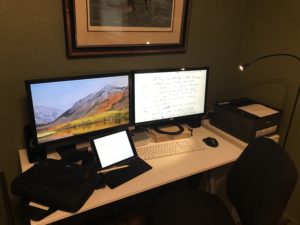
For those who do not know, my status is a 66-year-old retired person enrolled at the University of Minnesota (UMN) in pursuit of a degree in Communications. One class a semester, about to start my third semester. I am thoroughly enjoying the experience.
It feels like writing papers and making speeches is easier with a lifetime of experience under my belt than it was 45 years ago when I originally went to the U of MN. I might be better at papers and speeches today, but I was better at test taking back in the day.
When class is in session, I averaged about 10 – 12 hours a week reading, doing assignments, writing papers, practicing speeches and the like. We gave 4 speeches and took a final in my Public Speaking class. For the Analysis of Argument class, we wrote two outlines and 3 papers, gave a 20-minute group presentation and a final exam.
Here is an actual question from my last final: Define Pathos as it relates to grounds for a claim in an argument? Another question was something like: Match each of 7 terms with a definition from a list of 10 definitions.
Back when I last took tests at the U of MN, 1971 – 1975, the trick to tests was to understand the concepts. Now, I think it is: know the concept, know the term for the concept and understand the relationships between related concepts.
How to study for an exam is a work in progress for me. The phrase, “memorize to learn” is contrary to my instinct but might be the key to test taking, me thinks.
My professors took attendance every class period and lecture with slides. They ask leading questions to get the students engaged in the topic of the day. Students still try to avoid eye contact in hopes of not being called on. There are still a student or two who raise their hand to answer anything that even sounded like a question.
The biggest difference then to now is the technology. We access most stuff through the one-stop portal called MyU. MyU is where we register, pay tuition, view our class schedule and generally interact with the University. MyU is where we also find the app called Moodle. Moodle is where things get specific to individual classes: the syllabus, assignments, handouts, grades, class list, etc. It is where the professor and students interact with each other.
Preparing the group presentation was a ten-minute meeting at the end of a class. In that 10 minutes, one of the students created a Google Slides template. We each then “volunteered” to author one part of the presentation. As the next week progressed we all added our material and added comments to the material being added by others. Based on comments some modifications were made by the author of that section. By the next class, there was a collaboratively developed presentation which got a very good grade by a group who only met physically together for 10 minutes.
My textbooks are online. There was an option of getting a hard copy text, but it costs over 5 times more.
I took handwritten notes but most students take notes into an app on a device. Which is what I will do next semester. MacBooks are the most popular device but some have tablets or other devices such as a laptop computer. Notes are taken using a note-taking app. Notability is the most popular app although several other apps are also used.
My plan is to use an iPad with a Bluetooth keyboard and an Apple Pencil. I have been practicing taking notes in Notability. I am getting better, but time will tell if it will work for me.
Linda had the observation that I approach my class similar to how I approach past projects. What I enjoy most is collecting the tools to do the project with.
I started with a Bluetooth keyboard paired to my old iPad mini. Then upgraded to the latest iPad. Of course, I needed a new cover for the new iPad. I researched note taking apps and purchased Notability ($9.99). Then an Apple Pencil was purchased which meant I needed a new cover to replace the cover I bought month earlier with one that had a spot for the Apple Pencil. Obviously, I needed a new bag to carry the iPad, keyboard and USB cables to class.
Taking a class is more than just attending the class. To be a student one must actually become a student. Go to class, do the reading, think about the topic, talk to others about the topic, study the materials, take notes, write papers, give speeches, make presentations and use the technology.
Just in case you were wondering.
- Pathos = Proof by emotion. Appealing to the sympathies of your audience.
- Logos = Proof by reason. The logic of the argument you are trying to make.
- Ethos = Proof by the credibility of the advocate. Who says it, can matter.
- Kairos = The context. Using the right word at the right time with the right audience.
For the record, these definitions did not come from memory. I looked them up. Although it literally only took 3 minutes because I understood them enough to know what to look for.
What we perceive often depends on how close we look.
Scaleandperception.com